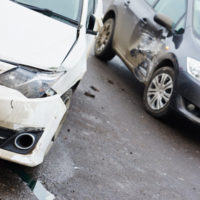Limiting Workplace Motor Vehicle Accidents
November 15, 2019 Someone dies in a motor vehicle collision every twelve minutes, a person is injured every ten seconds, and every five seconds a crash happens. According to the Occupational Safety and Health Administration (OSHA), many of these accidents happen while someone is commuting to or is already at work. Data shows that when employers implement effective driver safety programs in the workplace, fewer accidents, injuries, and deaths occur.
Someone dies in a motor vehicle collision every twelve minutes, a person is injured every ten seconds, and every five seconds a crash happens. According to the Occupational Safety and Health Administration (OSHA), many of these accidents happen while someone is commuting to or is already at work. Data shows that when employers implement effective driver safety programs in the workplace, fewer accidents, injuries, and deaths occur.
Bosses who employ commuters (people who drive personal or company vehicles for work), manage a fleet of vehicles, or oversee traveling sales forces are responsible for the costs and consequences related to motor vehicle crashes. OSHA estimates that automobile accidents cost employers a whopping $60 billion per year – but for the employees (and their loved ones) who are permanently or fatally injured, the short and long-term effects are far more severe.
Effective Driver Safety Programs in the Workplace
Despite the fact that automobile accidents are one of the leading causes of death in the United States many of them are completely preventable – and car accidents in the workplace are no exception to the rule. More and more employers are implementing driver safety programs to limit crashes, and the data proves it works.
For example, take Nationwide Insurance based out of Columbus, Ohio. After implementing a 10-step driver safety program, the rate of preventable crashes went down by 53% although the number of miles driven by associates increased by nearly 20%. One thing is clear: driver safety programs work.
According to OSHA’s motor vehicle guide, there are ten critical steps employers need to take when creating driver safety programs. They are:
- Commitment from senior management (creating policies, setting an example, and allocation of critical resources) and involving employees.
- Written procedures and policies.
- Driver agreements (e.g. driver safety pledges).
- Motor vehicle record (MVR) checks. MVR checks are part of the background screening process and detail if applicants and/or current employees have been convicted of any driving offenses (like driving under the influence) or have any traffic violations – even unpaid tickets.
- Crash reporting – and investigating what happened, and why.
- Vehicle selection, maintenance, and routine inspections.
- Disciplinary action system.
- Reward and/or incentive program to promote safe driving behaviors.
- Driver training and communication.
- Regulatory compliance
Safe Driving Culture
Employers have the power to create a culture of safe and responsible driving in the workplace – but they have to make it clear how important it is to them. There are plenty of ways that driver safety programs can – and do – save employees’ lives. Many employers have seat belt use policies, which require employees who drive company vehicles to wear seat belts. Wearing a seat belt reduces a person’s chance of dying in a motor vehicle collision by 45%. Having strict anti-drug and alcohol policies can also save lives by prohibiting driving under the influence.
There are other ways employers can help protect employees from getting into serious car accidents at work. Some helpful safety tips include:
- Keep parking lots well lit and maintained. This includes properly striping parking spaces and clearing parking lots from debris and snow,
- Install signage in parking lots and other relevant exits that remind employers to “buckle up”,
- Discuss the importance of obeying posted speed limits, even if an employee is “rushing” to a meeting or jobsite, and:
- Prohibit distracted driving (e.g. using a cell phone, eating, drinking, etc.) behind the wheel
If you were injured in a job-related motor vehicle accident, you may want to consider filing a workers’ compensation claim. Filing a workers’ compensation claim can be a tricky and confusing process, but do not worry – an attorney can help. If you have questions about your workplace injury, please contact a representative at our firm directly.
Philadelphia Workers’ Compensation Lawyers at Galfand Berger, LLP Represent Individuals Injured at Work
If you were injured at work, please contact our Philadelphia workers’ compensation attorneys. Galfand Berger has offices located in Philadelphia, Bethlehem, Lancaster, and Reading we serve clients throughout Pennsylvania and New Jersey. To schedule a consultation, call us at 800-222-8792 or complete our online contact form.
 Google Screened
Google Screened
